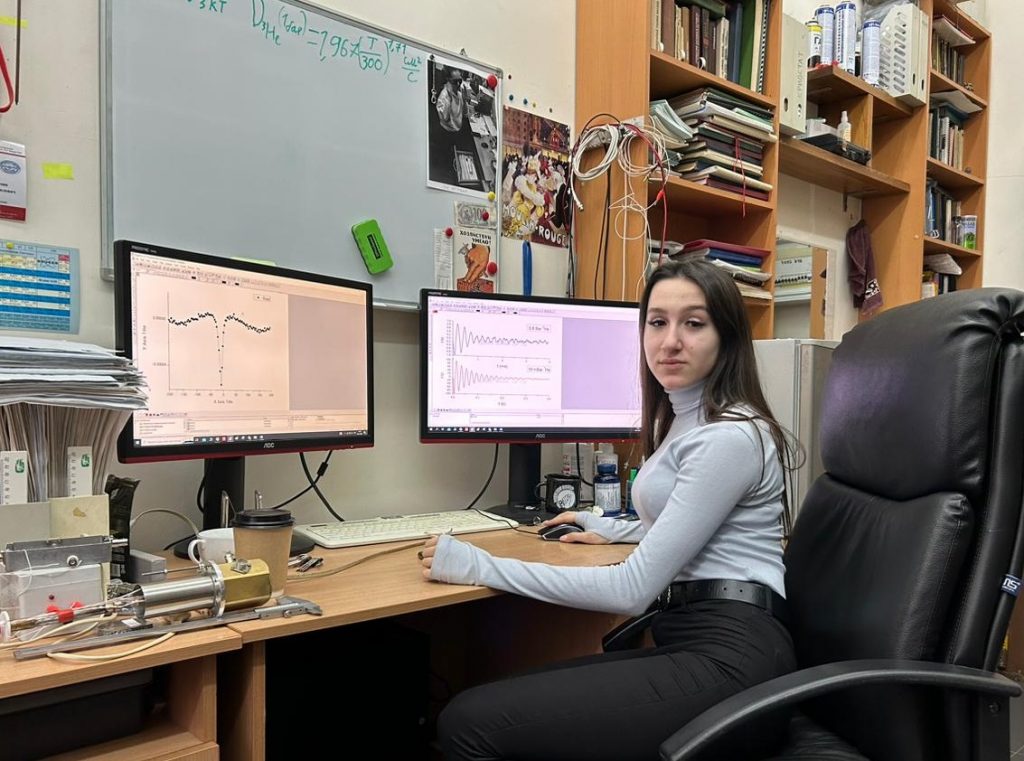Student working on heterostructures for non-volatile memory

Senior year student, Lab Assistant of the Center for Quantum Technology Anelya Kadikova is one of the winners of the Student Startup competition.
Her funded project is titled ‘Developing a heterostructure for magnetoresistive memory’. Kadikova’s research supervisor is Head of the Laboratory of Heterostructures for Post-Silicon Electronics Roman Yusupov.
The young scientist comments, “The material is a heterostructure – an object consisting of a sequence of ultra-thin, no more than 10 nanometers, layers of metals and intermetallic compounds of iron, platinum, manganese, grown under special conditions and in a certain sequence on a magnesium oxide crystalline substrate. This heterostructure will serve as the basis for magnetoresistive memory (MRAM), the functioning of which will be based on a combination of such phenomena as tunneling magnetoresistance, exchange bias, and the spin Hall effect. The ferromagnetic layers included in the heterostructure will be characterized by perpendicular magnetic anisotropy, which ensures a high packing density of memory cells. This structure has never been synthesized before.”
The complex of such phenomena can help increase the speed and density of memory, says the interviewee. The specifics of magnetoresistive memory is that it consists of ferromagnetic and non-magnetic layers. Writing to a memory cell requires switching the direction of magnetization of one of the magnetic layers. The spin Hall effect is one prospective approach to such switching.
The fact that MRAM is recorded through polarization effects and not through electric charge makes it non-volatile, i. e. independent of uninterrupted energy supply. It is also non-susceptible to ionizing radiation.
Reliable storage devices are very important to the military, civil aviation, AI systems, mobile gadgets, and many other things, concludes Kadikova.

